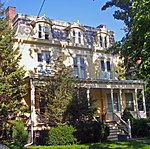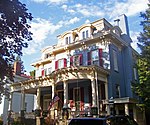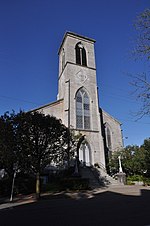Hillside, New York
Census-designated places in New York (state)Census-designated places in Ulster County, New York

Hillside is a census-designated place (CDP) in Ulster County, New York, United States. The population was 860 at the 2020 census. It is located just south of the city of Kingston, and the Town of Ulster.
Excerpt from the Wikipedia article Hillside, New York (License: CC BY-SA 3.0, Authors, Images).Hillside, New York
Lynette Boulevard, Town of Ulster
Geographical coordinates (GPS) Address Nearby Places Show on map
Geographical coordinates (GPS)
| Latitude | Longitude |
|---|---|
| N 41.918055555556 ° | E -74.033333333333 ° |
Address
Lynette Boulevard 7
12401 Town of Ulster
New York, United States
Open on Google Maps






